Hello community, today I want to share with you a recent experience I had with a person who advised me to change the spark plugs of my vehicle when he heard a fault in the ignition. The idea of this publication arises from my subsequent conversation with that person, to whom I shared what I know about the spark plugs that my car uses and how I know that they aren't the ones responsible for the failure.
Bujías resistivas ¿Que son y cómo se prueban?
Que tal comunidad, hoy quiero compartir con ustedes una experiencia reciente que tuve con una persona que me aconsejaba cambiar las bujias de mi vehículo al escuchar una falla en el encendido. La idea de esta publicación surge de mi conversación posterior con esa persona, a quien le compartida lo que se sobre las bujías que utiliza mi carro y como se que no son las responsables de la falla.
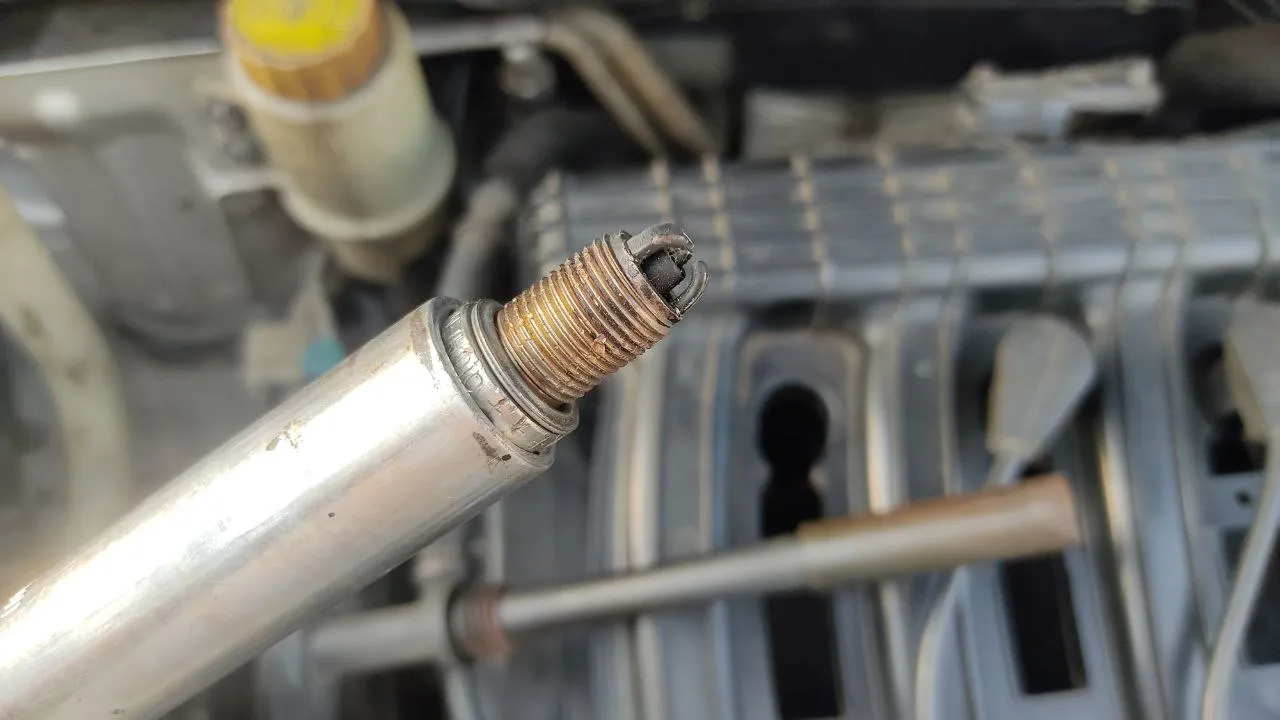

I am sure that many here know that there are several types of spark plugs, I think that all of us who have had a car in our lives have that very clear or at least we have heard it. One of the types of spark plugs that catches my attention and that my car currently uses are the resistive ones, they are one of the newest types in the automotive world due to the incorporation of more electronic components inside the vehicles.
But what strikes me most about this type of spark plugs is the function that fulfills its resistive element, hence its name, which seeks to attenuate the noise coming mainly from the ignition system. As an electronic I am well familiar with the noise in electrical systems, are frequencies that originate from electromagnetic waves that if they are not filtered affect the operation of other components, in the case of cars the starter or ignition is one of the main causes of noise.
Estoy seguro que muchos acá saben que existen varios tipos de bujías, creo que todos los que hemos tenido carro en nuestras vidas tenemos eso muy claro o por lo menos lo hemos escuchado. Uno de los tipos de bujia que mas llama mi atención y que mi carro usa actualmente son las resistivas, son uno de los tipos mas nuevos en el mundo automotriz debido a la incorporación de mas componentes electrónicos dentro de los vehículos.
Pero lo que mas me llama la atención de este tipo de bujías es la función que cumple su elemento resistivo, de ahí deriva su nombre, que busca atenuar el ruido proveniente principalmente del sistema de encendido. Como electronico estoy bien familiarizado con el ruido en los sistemas eléctricos, son frecuencias que se originan por ondas electromagnéticas que si no son filtradas afectan el funcionamiento de otros componentes, en el caso de los carros el arranque o encendido es uno de los principales causantes de ruido.
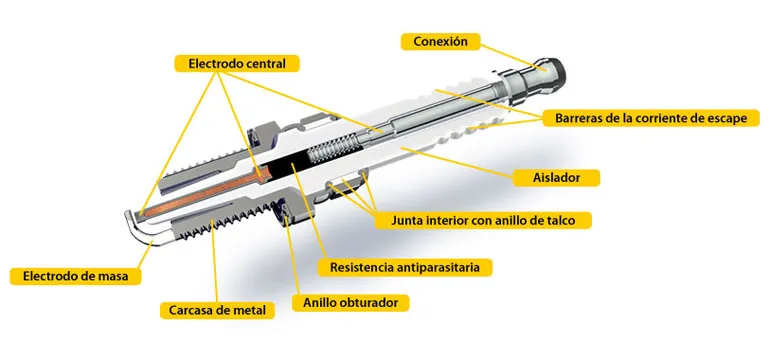
Source

When I started learning about the electronics of a vehicle I learned that in the ECU there are filters that protect the system from this noise, it was then that I learned that the resistive element of the spark plugs also fulfills this function of attenuating the noise and that this does not reach other electronic components of the vehicle. I shared this information with the person who recommended me to change my spark plugs, because he said that the resistance of the spark plug was damaged.
I clarified to the person that this is not entirely true, that although the resistive element is in series with the positive electrode, this does not break easily so that the voltage does not pass. This confusion is also shared by some sellers of parts stores when you ask them to sell you a resistive spark plug, I almost always end up buying giving them only the part number and not the description so as not to confuse them.
Cuando comencé aprender sobre la electronica de un vehículo supe que en el ECU hay filtros que protegen el sistema de este ruido, fue luego que aprendí que el elemento resistivo de las bujias tambien cumple esta función de atenuar el ruido y que este no alcance otros componentes electrónicos del vehículo. Estos datos los compartía con la persona que me hacía la recomendación de cambiar mis bujias, porque aseguraba que la resistencia de la bujía se daño.
Le aclaraba a la persona que eso no es del todo cierto, que aunque el elemento resistivo está en serie con el electrodo positivo, este no se rompe con facilidad para que no pase el voltaje. Esta confusión también la comparten algunos vendedores de casas de repuestos cuando pides que te vendan una bujía resistiva, casi siempre termino comprando dándoles solo el numero de parte y no la descripción para no confundirlos.
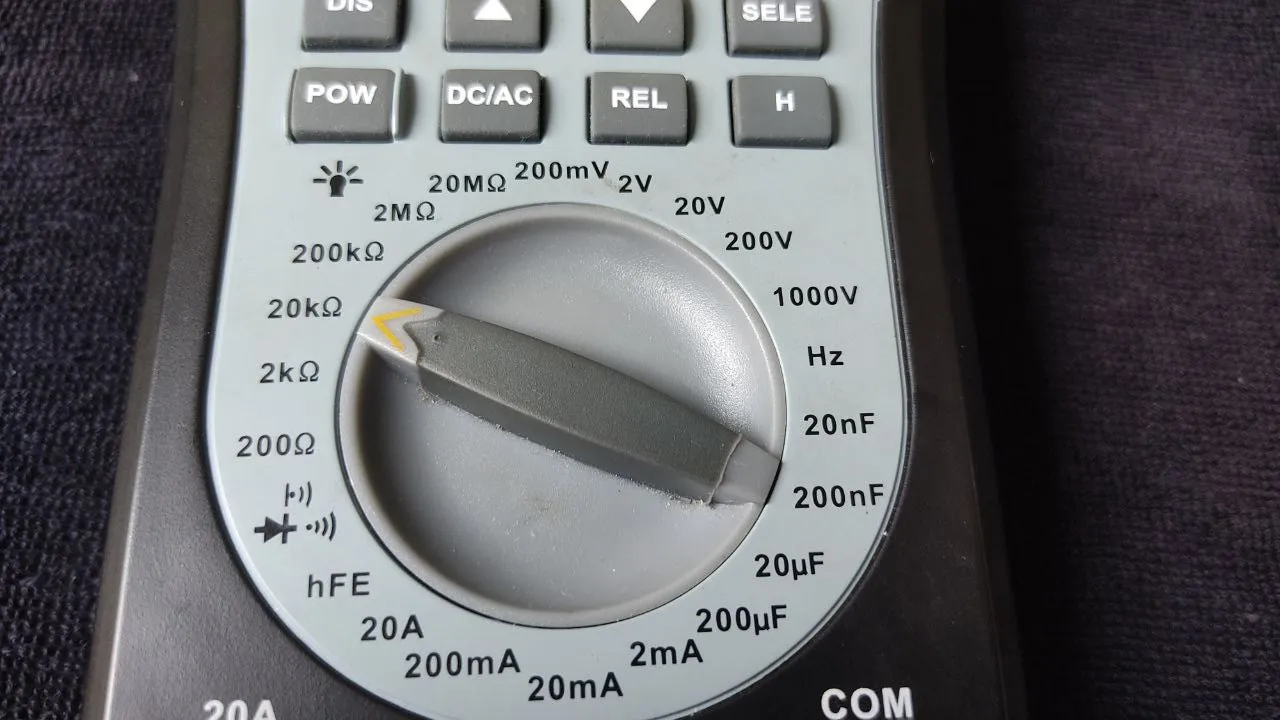

But how do we know if the resistive element of our spark plug is good, and what does it affect if it does not have the correct measurement? Remove a spark plug from my car to measure it and with a multimeter on the ohm scale, placing the tips on the electrodes of the spark plug should mark between 1 to 15 kilo ohms, depending on the manufacturer, in my case it should exceed 10 kilo ohms and as you can see in the picture the test spark plug is fine.
Pero ¿cómo sabemos si el elemento resistivo de nuestra bujia esta bueno? y ¿en qué afecta si este no tiene la medida correcta? Retire una bujia de mi carro para medirla y con un multímetro en la escala de ohm, colocando las puntas en los electrodos de la bujía debe marcar entre 1 a 15 kilo ohms, depende el fabricante, en mi caso debe superar los 10 kilo ohms y como pueden ver en la imagen la bujía de prueba está bien.
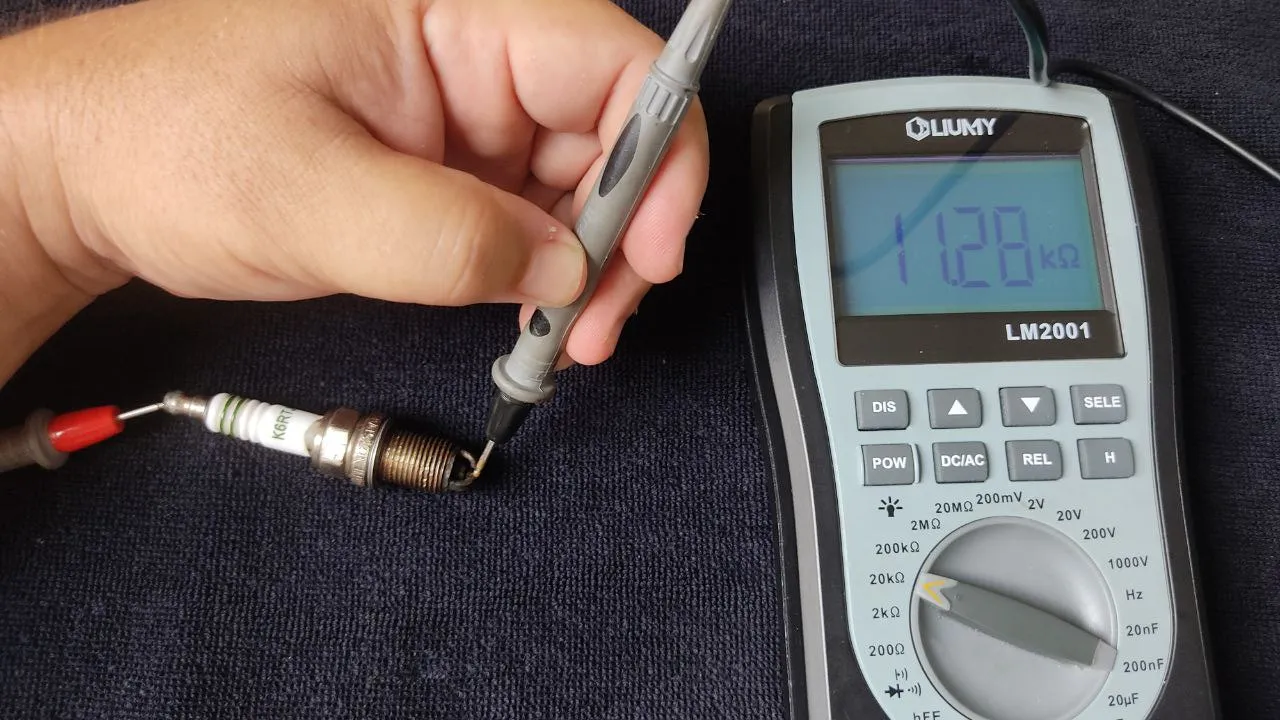
A spark plug with damaged resistance is obvious that it does not spark, but it may be jumping the spark but is not leaking noise, this can be seen with interference in other electrical components of the car as the radio, gps systems, even in the revolutions or indicators that give signal to the instrument panel.
Una bujía con la resistencia dañada es obvio que no de chispa, pero puede que esté saltando la chispa pero que no esté filtrando ruido, esto puede verse con interferencia en otros componente eléctricos del carro como el radio, sistemas gps, incluso en la revoluciones o indicadores que dan señal al tablero de instrumentos.
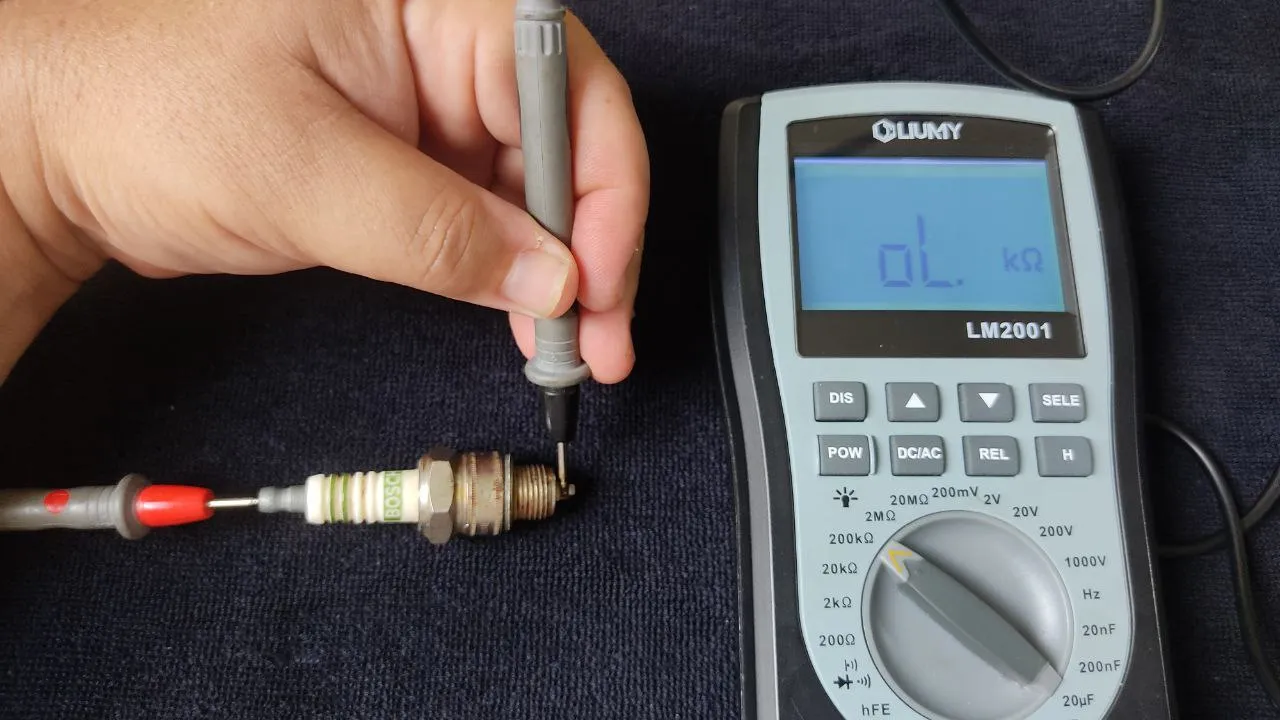

Another thing that caught my attention when I was doing the test for the person to learn, is that he told me that the spark plug was good because it had triple connection, because it gave more spark. I explained to him that this is another mistake, the reason to have 3 or even four negative electrodes is so that the spark jumps to the one that offers less resistance, because with time these are filled with carbon, so having more electrodes so that the spark jumps extends the useful life of the spark plug.
Otra cosa que me llamó la atención cuando hacía la prueba para que la persona aprendiera, es que me decía que la bujía era buena porque tenia triple conexión, porque daba mas chispa. Le explicaba que ese es otro error, la razón de tener 3 o hasta cuatro electrodos negativos es para que la chispa salte al que ofrece menos resistencia, porque con el tiempo estos se llena de carbon, asi que tener mas electrodos para que la chispa salte alarga la vida util de la bujia.

As a lover of electricity and electronics these are topics that I am passionate about, I felt comfortable sharing this information with the man who was talking, he ended up giving me a soda for the class, so he ended up calling our conversation hehe, so I hope it can be useful here too, since not everyone who accompanies us in the community are mechanics or electricians experts.
Como amante de la electricidad y la electronica estos son temas que me apasionan, me sentí a gusto compartiendo esta información con el señor que conversaba, terminó brindándome un refresco por la clase, así terminó llamando nuestra conversación él jeje, por eso espero que pueda ser de utilidad por acá también, ya que no todos los que nos acompañan en la comunidad son mecánicos o electricistas expertos.
